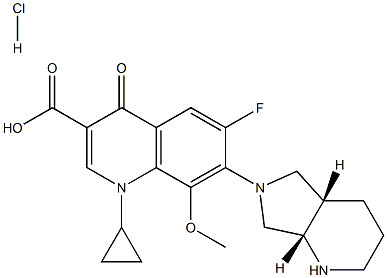Pramoxine HCl , ≥98% , 637-58-1
Synonym(s):
4-[3-(4-Butoxyphenoxy)propyl]morpholine hydrochloride;Pramoxine hydrochloride
CAS NO.:637-58-1
Empirical Formula: C17H28ClNO3
Molecular Weight: 329.86
MDL number: MFCD00054323
EINECS: 211-293-1
| Pack Size | Price | Stock | Quantity |
| 5G | RMB81.60 | In Stock |
|
| 25G | RMB220.00 | In Stock |
|
| others | Enquire |
PRODUCT Properties
| Melting point: | 181-183° |
| storage temp. | Inert atmosphere,Room Temperature |
| solubility | Chloroform (Slightly), Methanol (Slightly) |
| form | Solid |
| color | White to Off-White |
| Stability: | Hygroscopic |
| InChI | InChI=1S/C17H27NO3.ClH/c1-2-3-12-20-16-5-7-17(8-6-16)21-13-4-9-18-10-14-19-15-11-18;/h5-8H,2-4,9-15H2,1H3;1H |
| InChIKey | SYCBXBCPLUFJID-UHFFFAOYSA-N |
| SMILES | C1(OCCCN2CCOCC2)=CC=C(OCCCC)C=C1.Cl |
| LogP | 3.477 (est) |
| CAS DataBase Reference | 637-58-1(CAS DataBase Reference) |
Description and Uses
Pramoxine, also known as pramocaine, is different from other local anesthetic compounds in chemical structure. Active groups which are carboxylic acid derivatives like ester and amide are not present in this molecule. The drug molecule consists of ether functional groups that are much less active on a chemical level. The presence of the free radical morpholine in this compound is the cause of the reduction of the factor of toxicity and pharmacological activity. In pramoxine, toxicity is reduced but the local anesthetic affect is maintained.
Pramoxine Hydrochloride is used as a local anaesthetic and often in anti-itch formulations that provides temporary relief from itching caused by insect bites, minor skin irritations, poison ivy, sunburn and more.
Safety
| Symbol(GHS) |  GHS07 |
| Signal word | Warning |
| Hazard statements | H302-H315-H319-H335 |
| Precautionary statements | P261-P264-P270-P301+P312-P302+P352-P305+P351+P338 |
| Hazard Codes | Xi,Xn |
| Risk Statements | 22-36/37/38 |
| Safety Statements | 26-36 |
| WGK Germany | 3 |
| RTECS | QD8750000 |
| HS Code | 2934990002 |
| Hazardous Substances Data | 637-58-1(Hazardous Substances Data) |
| Toxicity | LD50 i.v. in mice: 79.5 ±2.7 mg/kg (Schmidt); LD50 in mice (mg/kg): 300 i.p., 750 s.c. (Monash, Gibbs) |




